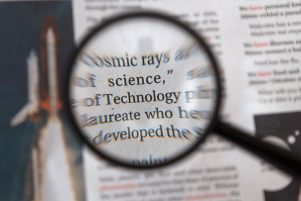Science and the Media
Article By Florimond Krins
 For the scientifically and non-scientifically minded alike, the news media provide a commonly used way of getting in touch with new scientific discoveries. Many news media now include a specific science section to keep readers informed of the latest research findings. However, although it is great that many media outlets present such topics, they shouldn’t be our only source of information, for various reasons.
For the scientifically and non-scientifically minded alike, the news media provide a commonly used way of getting in touch with new scientific discoveries. Many news media now include a specific science section to keep readers informed of the latest research findings. However, although it is great that many media outlets present such topics, they shouldn’t be our only source of information, for various reasons.
Just as it’s not a good idea to stick to only one type of media outlet for news, if we want to keep a diverse, fact-based and open-minded view of the world around us, the same goes for scientific news. To be biased, or subjective, is a natural human tendency, but for ethical reasons it should not be promoted.
Except for a few “hardcore” or old-fashioned news readers, most people have migrated, at least partially, to the paperless or digital news platforms. These media platforms are almost always free, if you are not too bothered by the avalanche of advertising. And some of them work on click-bait style articles to attract readers, with outlandish, misleading and sometimes false titles. So, if you don’t know any better you can be easily misled into believing things that are not true or, should I say, ‘alternative facts’.
For example, in 2017 many newspapers came out saying that a landmark research paper on climate change authored by various scientists was exaggerated and founded on ‘unverified’ data. They claimed that we had been duped into investing billions into global warming research. This story was in fact false, mainly because the newspaper writers misinterpreted the scientific language used, which, as always in such reports, presented a range of data from best to worst case scenarios. However, the journalists only presented the few predictive models that fitted in with their desired headline, ignoring the rest, because while some models may have shown a very mild warming, most showed an aggravated warming and a real risk to our existence and survival in the decades to come.
We cannot only blame journalists for spreading misleading, incomplete or even wrong information, as they themselves may not be well enough informed, whether due to a lack of time or resources to check facts or go deeper in their topics, or due a lack of scientific background. Or they may be driven by their bosses to generate attractive articles (although all journalists presumably sign up to a code of ethics).
In this situation we also have a responsibility to look for the right sources, to do our own research, which would start with looking at recognized scientific journals. As an engineer, I look at specific websites, journals or books when doing research for my work, but I also do this for my own scientific learning. It is important to note that the more technical the paper is the more expensive it can be, as it requires professional research by leading scientists. However, for the science enthusiast or even beginner there are many papers or magazines that are designed to keep everyone properly informed.
When faced with the vast quantities of information swirling around us every day, we need to apply our own intelligence and discernment to select the useful from the useless, the good from the bad, the wrong from the right. In his last book, Factfulness, the late Dr. Hans Rosling gives us some tools for looking at our world view in a more fact-based way. He encourages us to question our opinions about the world and gives us some tips for overcoming some of our instinctual responses which have unfortunately distorted our perspective on reality.
It is fair to say that humanity has never been faced with so much data and information about the world, which means we have more choices to make on a daily basis. It is our responsibility to look for correct, ethical and just answers to the many questions which face us and this starts with knowing where to look.
Image Credits: By Petr Kratochvil | Public DomainPictures.net | CC0 1.0
The entity posting this article assumes the responsibility that images used in this article have the requisite permissionsImage References
By Petr Kratochvil | Public DomainPictures.net | CC0 1.0
Permissions required for the publishing of this article have been obtained




What do you think?